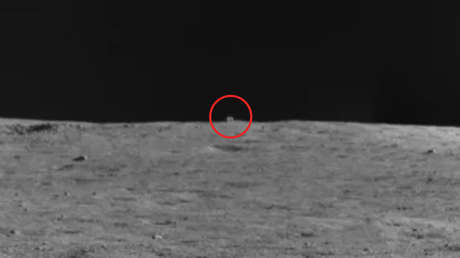Published:
22 ene 2022 21:41 GMT
Pictures taken by the rover show that most of the thin metal mesh on its wheels was covered with dirt.
A team of Chinese researchers recently published in the journal Science Robotics Study The base of the far side of the moon is filled with small craters, and there are no soft seas of solid volcanoes on the other side. “Sticky“.
The researchers obtained the data thanks to the Yudu-2 rover, part of the Chinese Chang’e4 mission, which became the first mission to land on the moon’s long distance in 2019.
Pictures taken by the rover show the thin metal mesh of its wheels Covered with dirt It was collected while rolling on the lunar surface.

That detail strongly contradicts the experience of Yutu, the predecessor of the Yutu-2 that came close in 2013. Although the two rovers have almost identical designs, the original Yutu had not piled large mounds on its wheels for more than two years. Study, only Some good powder.
According to experts, this is probably due to the cessation of volcanic activity farther away than the nearest side, so its soil Old And has long been exposed to the harsh conditions of space.
This process is called space weathering, and involves the absorption of repetitive impacts by micrometers, which pulverize the dirt into fine particles, melt it, and combine it into large, irregularly shaped glass droplets called agglutinates.
These irregular shapes are easily intertwined and form large tumors. Since the distal surface is older and more worn, it makes sense that it would be The greater the number of sumsThese are sticky and stick very easily on the wheels.
On the other hand, Yutu-2 discovered many small craters. Of the 88 pits documented in the group study, 57 were less than 10 meters wideAnd only 2 were more than 60 meters wide.
The new data provided by the rover could help researchers better understand the history and characteristics of the mysterious far side of the moon.





:quality(85)/cloudfront-us-east-1.images.arcpublishing.com/infobae/KTKFKR763RBZ5BDQZJ36S5QUHM.jpg)